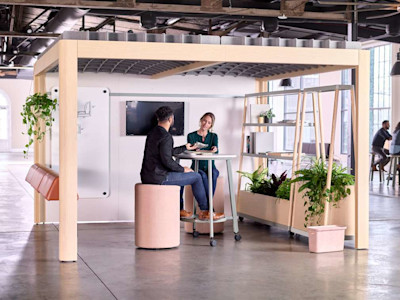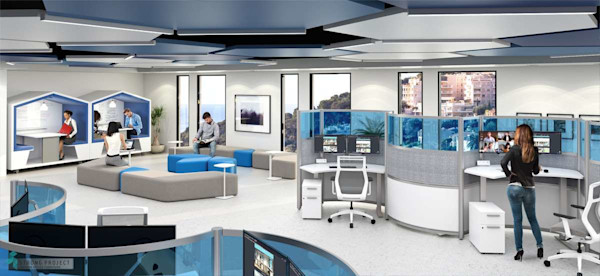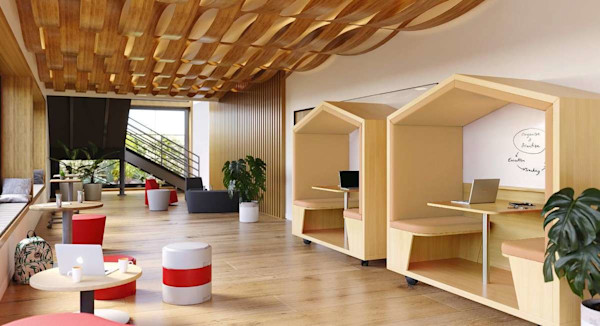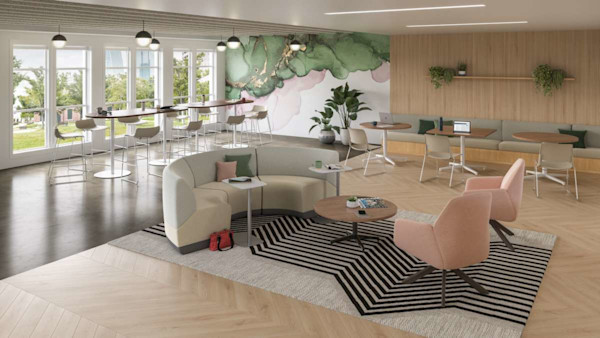Encouraging Collaboration Through Office Design

Updated November 2022 One key to happy employees is interpersonal relationships in the office. Many companies have begun implementing return-to-work plans. And it is the companies with strong communities that have met the least resistance. These relationships increase job satisfaction, productivity, and company culture. Employers can foster an environment that builds office interaction and collaboration, both through communication and teamwork policies, as well as office design.
Technological Balance

Encouraging Collaboration in a Hybrid Workplace
Include interactive conference rooms and project planning spaces. An idea wall puts collaborators in the same real estate to map out blueprints for the next product or service rollout.
Add video conferencing equipment in larger employee gathering spots, so company-wide meetings can take place and include team members from all over the world. Make the quarterly meeting more interactive, with questions from employees and colleagues. Provide a platform for workers to stay engaged.
Meeting planning software can be used in a variety of different ways. Some companies with game rooms or fitness areas with a racquetball court can use the reservation function of meeting planning to set up games with coworkers. Perhaps even a company-wide tournament would build a spirit of teamwork and healthy competition. And with hybrid teams, this software can help get the right people in the office on planned days.
Thoughtful Spaces

Prioritizing community building is smart business.
Centralizing break areas gives employees a reason to get up and move, and they’re more likely to run into colleagues from other departments. Sure, everyone likes the coffee machine to be only steps away, but without the need to traverse more real estate, workers are less likely to run into people they don’t sit near or see every day. Adding a café-like setting also encourages communication between departments. These spaces get their power from the fact that it’s entertaining to be there, and with people conversing over a latte or meal, it’s less stifling than a meeting room. By giving employees a place to relax and let down their guard, they have reason to voice ideas that may not be typical or even air grievances. Employees who aren’t given the opportunity to vent or even confront to resolve interpersonal issues with colleagues are going to sour on their place within the company very quickly.
Encouraging Collaboration and Well-Being

The office that communicates well is the office that grows and succeeds.
Get your employees up and moving, conversing, and generally interacting. Whether they have a project together or just a conversation, bonds form. These relationships encourage future collaborations and often innovations. Prioritizing community building is smart business. The office that communicates well is the office that grows and succeeds. It takes more than connectivity through screens. Encouraging collaboration in the workplace should be a priority for any organization that wants its company culture and teams to thrive. And sometimes it takes connectivity by design.



